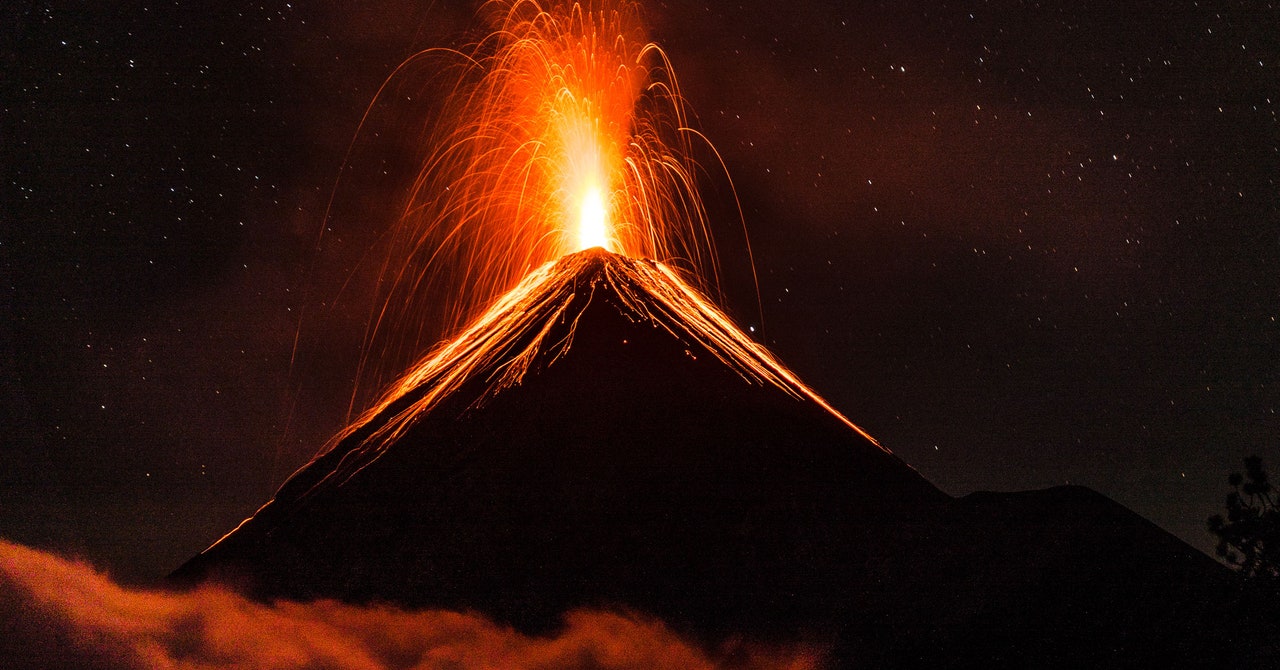
Think back to any dinosaur illustration you saw as a kid. The background was almost certainly one of two things: an asteroid streaking across the sky or a volcano blowing its top. (If the illustrator was feeling extra dramatic, maybe both.)
A 6-mile-wide asteroid, which hit the coast of the Yucatán Peninsula 66 million years ago, obliterated any nearby dinos and filled the sky with material that plunged the planet into a species-dooming winter. But don’t sell those volcanoes short. A growing body of geological evidence is suggesting that the dinosaurs were already enduring climatic chaos before the asteroid, thanks to huge, relentless volcanism in India’s Deccan Traps.
For 300,000 years before impact, and for another 500,000 after it, these volcanoes emitted vast clouds of carbon dioxide and sulfur dioxide. Even when they weren’t actively erupting, they were doing “pre-eruptive” degassing. The CO2 heated the planet—as humanity’s emissions are doing today—and the SO2 cooled it by reflecting some of the sun’s energy back into space. The back-and-forth created a climatic whiplash that drove a mass extinction. So the asteroid wasn’t a singular Grim Reaper for the dinosaurs, but the coup de grâce that sealed their fate. At least, that’s how the theory goes.
Scientists are still debating just how much of a role this volcanism might have played in the Cretaceous–Paleogene extinction, compared to the obvious ouchie of an asteroid slamming into the planet. Now, a deep-learning computer model has weighed in, finding that the CO2 and SO2 gas required to cause the extinction of the dinosaurs is consistent with the output of the Deccan Traps.
“Our findings specifically lend credence to the idea that volcanism was disturbing the atmosphere and the climate way before the asteroid,” says Dartmouth College computational geologist Alexander Cox, lead author of a new paper in Science. “You can actually recreate the environmental conditions that could cause a dinosaur extinction solely by volcanism, as if the asteroid weren’t there. But of course, we can’t discount the fact that the asteroid definitely didn’t cheer up the dinosaurs.”
“This study is really interesting. No one has really done anything like this before,” says University of Florida geochronologist Courtney J. Sprain, who studies the extinction but wasn’t involved in the research. “In the last couple of years, there’s really been a shift into reexamining the role of volcanism in the mass extinction.”
The Deccan Traps take their name from the Swedish trappa, meaning “stair,” due to the step-like outcroppings there. Over the course of almost a million years, their eruptions produced a million cubic kilometers of lava, burping up 10.4 trillion tons of CO2 and 9.3 trillion tons of SO2. For perspective, between 2000 and 2023, humans emitted 16 billion tons of CO2 per year, which is around 100 times the rate from the Deccan Traps. So this volcanism was a slower release of planet-warming gas, but it happened for hundreds of thousands of years. This rise in greenhouse gases, of course, warmed the climate, although the SO2 had a contradictory cooling effect.
Geologists already have historical climate data thanks to a proxy: tiny oceanic organisms known as foraminifera, which built shells of calcium carbonate, died, and sank to the seafloor to become rock. By looking at the different isotopes of carbon and oxygen in these ancient shells, scientists can determine both atmospheric carbon concentrations and ocean temperatures millions of years ago.

